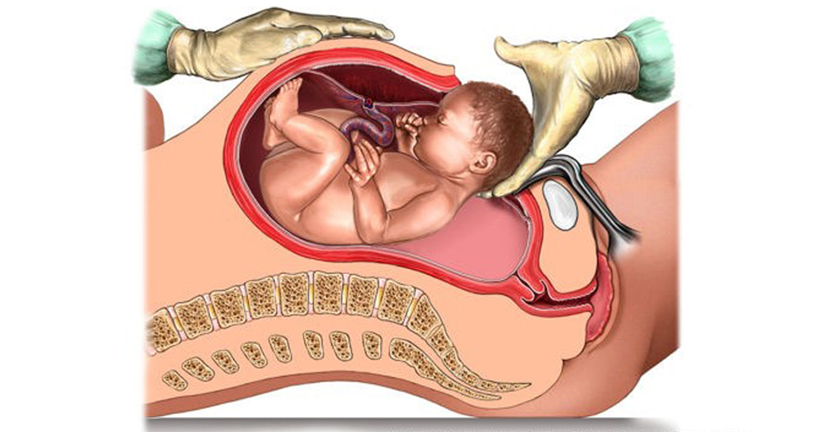A nurse is caring for a client who experienced a cesarean birth due to dysfunctional labor. The client states that she is disappointed that she did not have a natural childbirth. Which of the following responses should the nurse make?
Maybe next time you can have a vaginal delivery.
It sounds like you are feeling sad that things didn’t go as planned.
At least you know you have a healthy baby.
You can resume sensations sooner than if you had delivered vaginally.
The Correct Answer is B
Choice A reason:
Saying “Maybe next time you can have a vaginal delivery” is not supportive and may minimize the client’s current feelings of disappointment. It is important to acknowledge and validate the client’s emotions rather than focusing on future possibilities.
Choice B reason:
This response, “It sounds like you are feeling sad that things didn’t go as planned,” is empathetic and validates the client’s feelings. It shows that the nurse is listening and understands the client’s disappointment, which is crucial for emotional support.
Choice C reason:
While it is true that having a healthy baby is important, saying “At least you know you have a healthy baby” can come across as dismissive of the client’s feelings. It is essential to address the client’s emotions directly rather than shifting the focus.
Choice D reason:
Telling the client “You can resume sensations sooner than if you had delivered vaginally” is not relevant to the client’s expressed feelings of disappointment about not having a natural childbirth. This response does not address the emotional aspect of the client’s experience.

Free Nursing Test Bank
- Free Pharmacology Quiz 1
- Free Medical-Surgical Quiz 2
- Free Fundamentals Quiz 3
- Free Maternal-Newborn Quiz 4
- Free Anatomy and Physiology Quiz 5
- Free Obstetrics and Pediatrics Quiz 6
- Free Fluid and Electrolytes Quiz 7
- Free Community Health Quiz 8
- Free Promoting Health across the Lifespan Quiz 9
- Free Multidimensional Care Quiz 10
View Related questions
Correct Answer is A
Explanation
Choice A reason: An infant who has pertussis and is receiving oxygen via nasal cannula:
Pertussis, also known as whooping cough, is a highly contagious respiratory disease that can be particularly severe in infants. The fact that the infant is receiving oxygen indicates respiratory distress, which is a critical condition requiring immediate attention. Infants with pertussis are at high risk for complications such as pneumonia, apnea, and respiratory failure. Therefore, this patient should be assessed first to ensure their airway and breathing are adequately supported.
Choice B reason: A school-age child who has diabetes mellitus and requires blood glucose monitoring:
While it is important to monitor blood glucose levels in children with diabetes mellitus to prevent hypo- or hyperglycemia, this condition is generally more stable and manageable compared to the acute respiratory distress seen in the infant with pertussis. Blood glucose monitoring can be scheduled and managed, making it a lower priority in this context.
Choice C reason: An adolescent who was admitted to the unit in sickle cell crisis and is ready for discharge instructions:
Sickle cell crisis can be extremely painful and requires careful management. However, if the adolescent is ready for discharge, it indicates that their condition has stabilized. Providing discharge instructions is important but can be deferred until more critical patients are assessed.
Choice D reason: A toddler who has both arms in casts and needs to be fed his breakfast:
While this toddler requires assistance with feeding due to their casts, this situation does not pose an immediate threat to their health. Feeding can be managed after ensuring that more critical patients, such as the infant with pertussis, are stable.
Correct Answer is D
Explanation
Choice A reason:
Albuterol is primarily a bronchodilator and does not significantly reduce inflammation. Anti-inflammatory medications, such as corticosteroids, are typically used to address inflammation in the airways.
Choice B reason:
While albuterol can help reduce coughing episodes by opening the airways and making breathing easier, it is not its primary function. Coughing can be a symptom of bronchospasm, which albuterol helps to relieve.
Choice C reason:
Albuterol is effective in preventing wheezing by relaxing the muscles around the airways, which helps to open them up and allow more air to flow through. This action helps to alleviate wheezing, a common symptom of asthma and other respiratory conditions.
Choice D reason:
The primary function of albuterol is to open the airways. It is a bronchodilator that works by relaxing the smooth muscles around the airways, allowing them to widen and making it easier to breathe.
Choice E reason:
Albuterol does not stimulate the flow of mucus. Its main action is to relax the airway muscles and improve airflow. Mucus production is typically managed by other medications or treatments.
